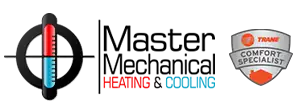Create an Energy-Efficient Cooling Plan for Your Home
Summers can be oppressive without a cool refuge. Daily highs in the 80s and 90s are commonplace and often remain for weeks. Yet the cost of running the air conditioner at full blast day and night is as overbearing as the temperatures. More households understand the need to strategically plan where cool air should go and how to get it there.
Different Houses, Different Temps
The heat of summer hits in various ways according to several factors. Geography, for one, will affect the intensity of heat. Altitude, humidity levels, urban vs. rural, and the presence of trees or other variables determine just how hot it feels. The design of the house, likewise, impacts the amount of energy it demands to be a comfortable abode. Where are the windows situated, and what is the roof made of? Meanwhile, optimal ventilation and solar power capacity help keep energy usage and electric bills more modest.
Assessing Current Energy Usage
To minimize both use and expenditure without sacrificing heat alleviation, the homeowner must first determine present energy consumption. One way to figure this out is to take the wattage of the unit—whether a window a/c or a central HVAC system—and multiply it by the statewide average cost of usage per kilowatt-hour. Then, divide that product by 1,000. In so doing, you can get a rough idea of how much of your utility payments go toward air conditioning.
Implementing Energy-Efficient Practices
Lowering the output and cost of your HVAC system is achievable through certain measures. You can accomplish some on your own and others with the assistance of an HVAC professional. For example, optimize ventilation when the temperatures are lower, at night e.g. Open windows and run fans to circulate air. Older homes, and some newer ones, have attic fans that can expel the humidity. Also, avoid running the a/c for extended periods when nobody is home. Where assistance is needed, employ a technician to change the filters on the HVAC at least twice a year. Re-sealing ducts and annual maintenance go far in keeping the unit operating effectively.
Upgrading the Cooling System
An older cooling system may cost more over time than a one-time investment in a new unit. The United States government awards an Energy Star designation to heating, ventilation, and air-conditioning systems that meet the criteria of boosting air quality, internal comfort, and environmental friendliness for the least money. If your unit is older than 10 to 15 years, it likely fails to meet these new standards. Such improvements include better insulation, vapor compression systems, use of desiccants, and evaporative cooling.
Develop a Long-Term Plan
Whether utilizing easy tweaks at home or hiring an HVAC professional for installation and repair, homeowners do well to establish a regimen for consistently minimizing the financial and electrical burden of keeping the house cool and pleasant.
Contact Us Today!
The key to a comprehensive reduction in a/c expenses is household conservation and regular professional assistance. Master Mechanical technicians are experts in efficiency experts and can aid you in both temperature and budgetary relief. Contact us today to get started in maintaining your cooling system.






